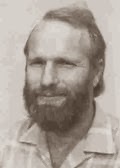Seattle was founded by the Denny, Boren, Bell, Terry, and Low families. Non drinkers, conservative, rather austere folks. But they got a toehold on the beach where virgin forest met the sound. And they started a community that reflected their conservative values. The year was 1851.
Little did they know their vision would come unhinged a year later when David Swinson Maynard arrived to become the town doctor. Doc Maynard. A practiced Alcoholic who dispensed opium medicinals like they were candy. He started Seattle's first bar and first brothel. Along with the first store, restaurant, Hospital, and first Hotel.
Promoter, entrepreneur, doctor, lawyer, justice of the peace and Indian agent. Doc wore many hats, but all of the oriented to helping Seattle become, well, Seattle. One of his early suggestions? Changing the name of the settlement from "Duwamps" to “Seattle”. No kidding.
Doc’s accomplishments were given short shrift owing to the fact that being older, he died earlier than the other founders and the other founders didn’t much care for him. Doc’s more prominent place in history was primarily argued by Bill Speidel, creator of Seattle’s underground tour. While Speidel died back in the late 80’s, his company, and sense of humor, continue to flourish.
Shortly after arriving in what is now Seattle, Doc was asked to attend to an ailing Arthur Denny. Doc’s standard treatment involved a liquid that was primarily alcohol laced with opium. It was uplifting and eased pain. While undergoing treatment, Doc ‘suggested’ to Denny that he was thinking about opening a store and did Denny know of a suitable place.
Denny, feeling no pain, effectively gave Doc much of downtown Seattle while under the influence. Doc proceeded to subdivide the property he was given but he included a stipulation in the contract that a ‘substantial’ building needed to be erected on the property within 3 months. He did this to avoid land speculation and to jump start the city. He set himself up as the sole judge on whether or not the structure met the definition of ‘substantial’ and as a result resold some of the same properties several times.
Doc also conned the congress into carving out Washington territory from the Oregon territory. With the population of what is now Washington numbering some 4,000, the vast majority of whom lived on the north shore of the Columbia, that was no small task. Puget sound had some 200 people total and they very much wanted out of Oregon territory. Most of the rest of the population lived on the Columbia and couldn't care less. Doc got it done by convening a meeting of ‘delegates’ who represented themselves and little else.
The battle between the Denny group and Doc remains with us today. Boren, Denny and Bell wanted their streets to parallel the shore line, but Doc was adamant on a North / South orientation. They argued but could not come to terms. When they arrived at the courthouse, Doc was quite hung over, and we live with the disagreement today. Yesler Way forms the dividing line between the two claims. Note how the streets come together. The rest of King County is laid out as Doc wanted – but not the area between Seattle Center and Pioneer Square.
Doc’s death was one of the best attended funerals in Seattle history. As one of his contemporaries said during the service,
"Without him, Seattle will not be the same.
Without him, Seattle would not have been the same.
Indeed, without him, Seattle might not be."



.jpg)

























.jpg)
.jpg)





.jpg)



















